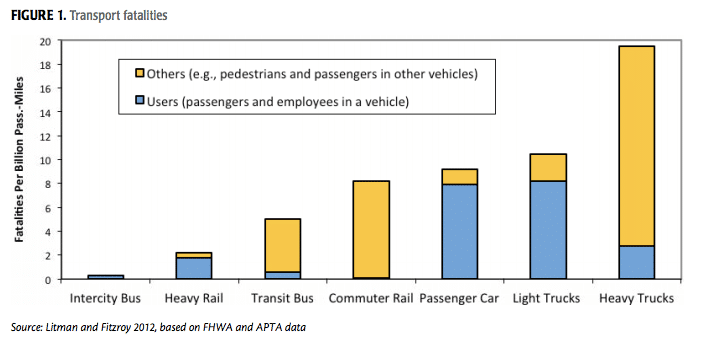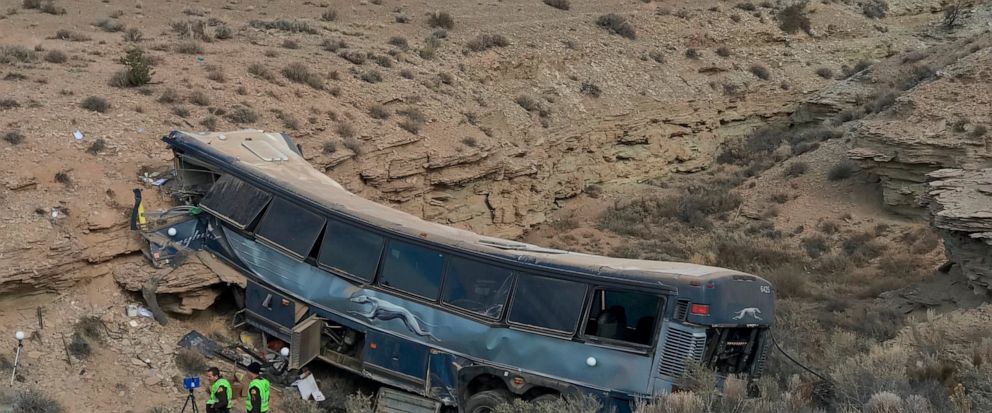
Buses are oftentimes seen as a safe mode of transportation, but accidents such as bus crashes do happen, and can be detrimental to one’s life or limbs. This article will be taking a look at steps a passenger should take after a bus crash.
Buses are a convenient and affordable way to get where you need to go. People often find buses quite safe, to the point that they don’t feel the need to wear seatbelts – never-mind that most buses don’t have seatbelts. In fact, the National Highway Traffic Safety doesn’t require buses over 10,000 Lbs to have seatbelts, although some states to enforce seat belts in certain large trucks and buses.
While no current law mandates the use of seatbelts in many buses- a study released by the Federal Motor Carrier Safety Administration (FMCSA), estimated there being around 170,000 persons injured in the US in large truck and bus crashes in 2017, with a total fatality of 5,005 persons.
That said, if you’re reading this, you’ve either been involved in an unfortunate bus crash, or you simply wish to know what to do if it ever happens. That said, we’ll be taking a look at steps you should take if you’re a passenger who’s involved in a bus crash.
Call Emergency Services
Once a bus accident occurs, your first action should be getting medical attention (not just for you, but also for everyone in the crash). Generally, the driver is responsible for calling emergency services, but in some cases, the driver may be injured, unconscious, or worse. Which is why it’s best for you to call or have someone else call if you’re unable to do so. Contacting emergency services would help those who need medical attention and also helps local law enforcement to file a report that can assist you and all the others involved when making claims. If you’re able to leave the bus in a safe manner, do so before calling, as buses can either catch fire or be involved in a succeeding collision (which happens in busy highways).

Gather Evidence
If you’re physically able to, and the scene is safe, take pictures of the accident from different angles and also any injuries you may have suffered while waiting for the ambulance and authority to arrive. Additionally, if you don’t need to be rushed into the emergency room, take time to file the report to the police before or after visiting your doctor to check for any injuries. Don’t assume that the bus driver or bus company will be reporting the accident; it’s best to be proactive – this helps you and others in filing your claims.
Get Medical Attention
Report any visible injuries and pain you may feel. One of the worst mistakes you can do after an accident is refusing medical aid or going to the doctor after the incident simply because you don’t “feel” any pain, or don’t have any visible injuries.
You have to remember that adrenaline can distract you from any sensation of pain, and some injuries and issues take a few hours to manifest. So, as a rule, even if it’s just a minor collision and there’s no apparent pain or injury, always get medical attention — your doctor can help detect any internal and external injuries that you may not feel or see, and it also is necessary when making an injury claim.
Keep Records
Medical bills can rack up, and you may even need to speak to undergo physical therapy and take a few days off from work after the bus accident, which is why it’s best to keep a record of every expense you had or lost wages due to the accident in order to help you in claiming.
That said, don’t just focus on your medical bills; keep receipts and bills from your doctor, the gas/transportation costs when going to and from your doctor and/or physical therapist, and even the quotation for repairs/damage on the laptop or gadgets that you had in your person during the accident.

Find A Reliable Lawyer
Your next step is to reach out to your local personal injury lawyer in Utah in order to assist you in claiming for damages and all the expenses incurred after and due to the bus accident. Remember, the bus company or bus driver’s insurance company will try to minimize the amount of compensation as much as possible, so having an experienced personal injury lawyer – no matter which state – can help you in both building your case and ensure that you’re able to claim everything (even some expenses or damages that you may have overlooked).
Conclusion
Buses are indeed a safe mode of transportation, mostly due to their size, but that doesn’t make them immune to accidents such as traffic collisions, nor does it safeguard their passengers from injury, which is why it’s best to take note of all these steps if you’re ever involved in an accident to preserve your health and also be properly compensated for all the damage sustained.






